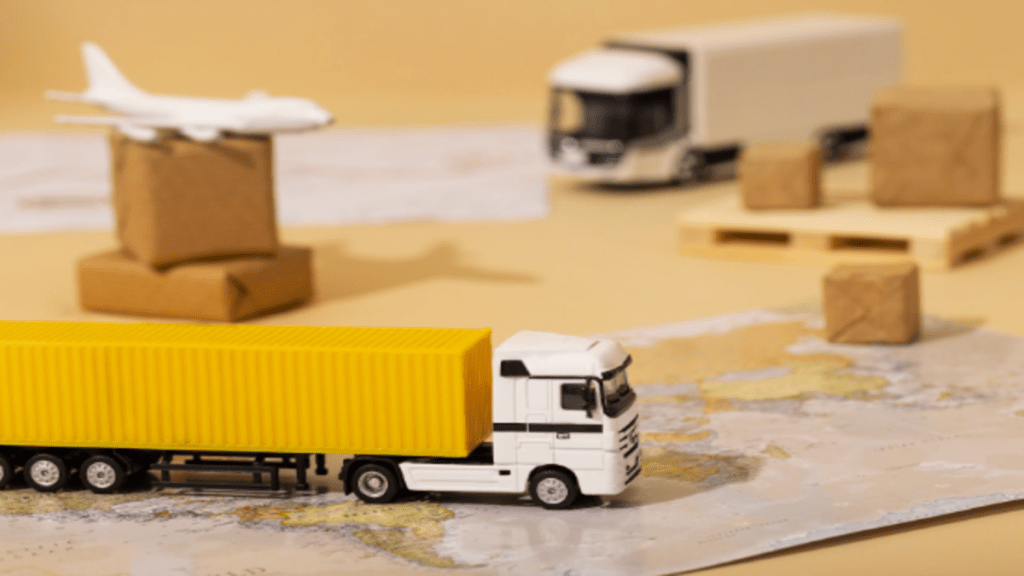More than merely how goods are delivered to clients is included in logistics. A change is taking place that is altering how we make purchases and it includes digital and retail. With e-commerce, effective logistics may boost revenues and improve consumer satisfaction. The global logistics market is anticipated to increase by an average of 6.5 percent from 2020 to 2027, from $7,641.20 billion in 2017 to $12,975.64 billion in 2027.

The supply chain industry’s future is unwritten and open to change that will affect how technologies are used in logistics and transportation development in the future. Online stores typically serve a sizable number of customers from all over the world, unlike brick-and-mortar stores. E-commerce businesses are concentrating on enhancing their supply chains to fulfill the rising demand for digital goods. This is crucial for both a successful business operation and making sure that clients can buy things anywhere in the world.
Top Benefits of Devices Transforming Logistics
Let’s examine a few of the areas where technical advancements assist with e-commerce logistics.
Integration with inventory management systems that is more thorough will make tracking easier
One of the most critical components of a successful supply chain is accurate inventory tracking. The inability of specialized logistics equipment and the inventory management system to interact with one another is one of the most frequent technological disconnects. The data must then be processed separately or transferred manually from a device into the management system, which adds to the workload. By removing the need for manual labor or independent data processing, a more integrated system will increase productivity and decrease errors. In turn, this will increase forecasting precision to lower overordering of stock outs.
Utilizing augmented reality to get real-time data
The technology known as augmented reality (AR) projects information onto the physical world. You’ve probably used augmented reality (AR) on your phone before with tools like the walking navigation feature in Google Maps. Nevertheless, this technology is not just for smartphones and through AR glasses has significant ramifications for transportation and logistics.
AR glasses can be utilized for things like real-time traffic and routing information on the road or inventory management in a warehouse, enhancing efficiency and lowering errors. In the end, augmented reality is all about providing the information you require right in front of your eyes. The goal is to increase productivity without constantly looking at a computer screen by using real-time data.
Drone deliveries that are autonomous to speed up the last mile
Despite the fact that autonomous delivery drones may seem like a futuristic pipe dream, businesses like Amazon and Google are currently testing them. These self-navigating delivery drones are the last mile’s modern answer since they are faster and more effective than existing systems.
Before they can become the norm, there is still some work to be done on the rules front, but we’re headed in the right direction. Autonomous vehicles of all types will very probably become more affordable to businesses of all sizes as technology develops and they become more effective and dependable.
GPS accuracy was improved
Nowadays, practically everyone utilizes GPS, whether it be on their cellphones or the built-in systems in their cars. These gadgets’ accuracy has significantly improved over the years, which has helped disgruntled and lost drivers as well as the supply chain. By tracking the positions of trucks and enhancing hauls through access to up-to-date traffic data, GPS’s high precision enables higher efficiency and delighted consumers.
Warehouse automation
A productive combination of automation technologies is required for warehouses to run efficiently. Automation in warehouses improves performance, speed, and productivity by reducing human interaction. Robot picking and automated guided cars are two examples of technologies that can reduce human error and increase warehouse productivity, resulting in improved material handling.
Last mile delivery
The supply chain’s final stage, which runs from the production or completion center to the consumer, is frequently inefficient and accounts for a sizable amount of the overall cost of moving goods. In actuality, last-mile distribution is crucial to logistics since it is directly related to consumer loyalty. The last mile distribution of the products is effectively completed through integration of many cutting-edge technologies.
On-demand delivery
Another significant force transforming the logistics services sector is on-demand delivery. To deliver meals from restaurants to homes, the food business launched an on-demand delivery service. Nonetheless, it gradually made headway in the logistics sector as well.
The recipients of the goods can select from a variety of flexible delivery options, including the delivery location and time, thanks to delivery management software company’s use of on-demand delivery (ODD). Customers can select the time and location for the logistics service to deliver their package, in other words. On-demand services are quickly growing in popularity as a result of their flexibility.
Machine learning and artificial intelligence (AI) (ML)
We can see that there is ongoing evolution in fields like artificial intelligence, advanced analytics, machine learning, and automation based on analysis of modern digital trends in logistics. By adopting ML and AI in logistics, several organizations have now benefited and gained a competitive advantage over rivals.
Your business has the ability to spot trends and produce insights into the logistics process, both of which are beneficial for predictive network management. For instance, you will be able to accurately foresee future trends and make wise decisions about the future. As a result, your company will never run out of goods as AI is better than humans at forecasting outcomes.
In order to lower the danger of human error, contemporary warehouses use AI tools like autonomous forklifts and robot arms. Aside from warehouse automation, autonomous vehicles are another aspect of artificial intelligence. To improve supply chain management, autonomous vehicles will be able to platoon and operate more cheaply thanks to AI and ML.
Improved shipment tracking (Barcodes)
All of our cutting-edge software and sensors will let us expand more quickly, but delivery will only be possible thanks to barcodes. Barcode technology businesses are concentrating on creating more user-friendly barcodes that can be swiftly integrated into printing and boost overall economic viability as the warehousing industry expands quickly. The problem of barcodes that have been stolen or altered will be solved by the system.
Technology is crucial to enhancing the dependability and security of product delivery. Although they are widely used, digital technologies may not be the only means to success. Businesses can enhance their time management, discipline, transparency, crew and product safety, and even their profitability by proactively implementing them.
Conclusion
The need for companies to manage those assets has grown as device usage expands across all facets of the contemporary supply chain. We are the only business that integrates a complete device management solution with your software deployment, content management, and update requirements.
Technology is altering logistics processes by offering new approaches to dealing with data and advancements throughout the entire supply chain. The performance of logistics and transportation can be considerably enhanced by the use of technology such as predictive analysis, machine learning, drones and autonomous vehicles. They can change how inventory is handled in warehouses and improve logistics and last-mile delivery systems. In light of this, supply chain and logistics companies may want to take a look at these technologies as a way to increase productivity and cut expenses.
Author
Vishnu Prasath is an experienced project manager at ManageTeamz, a leading provider of delivery and logistics software. He delivers effective solutions, streamlining business operations and achieving goals. Passionate about technology, Vishnu drives innovation and growth in the logistics industry.


